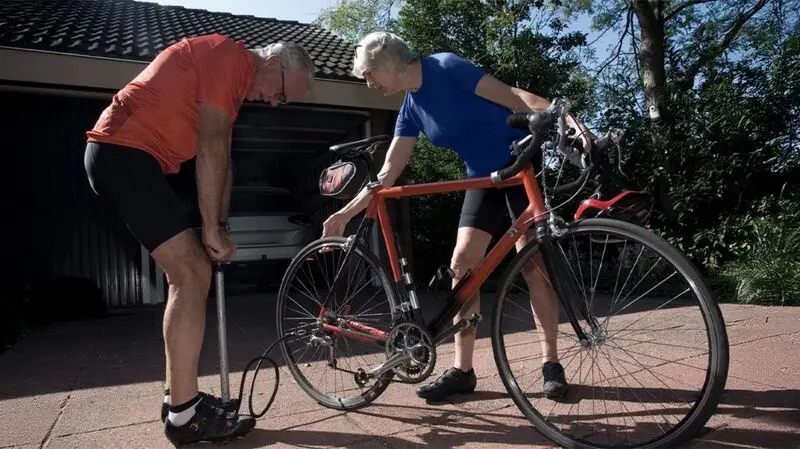
- Parkinson’s disease negatively impacts the body’s central nervous system, which includes the brain.
- A new study has found that cycling helps restore neural connections damaged by Parkinson’s disease.
- This benefit was seen in as little as 12 cycling sessions over a four-week period.
According to the Parkinson’s Foundation, an estimated 10 million people around the world live with Parkinson’s disease — a neurological condition that affects a person’s ability to move.
Parkinson’s disease negatively impacts the body’s central nervous system, which includes the brain.
“The brain is a dynamic and ever-evolving system, and Parkinson’s disease disrupts this system in complex, continually changing ways,” Aasef Shaikh MD, PhD, professor and vice chair (research), director of the Research and Education Center in the Neurological Institute at University Hospitals Cleveland Medical Center, Department of Neurology at UH Cleveland Medical Center, explained to Medical News Today.
“Even in the absence of disease, the brain undergoes natural changes as it ages. When a degenerative condition like Parkinson’s is introduced, it adds layers of complexity and nonlinear disruptions to brain function,” he said.
Shaikh is the lead author of a new study recently published in the journal Clinical Neurophysiology that found cycling helps restore neural connections damaged by Parkinson’s disease.
For this study, researchers recruited nine adult participants with Parkinson’s disease to undergo 12 cycling sessions over a four-week period. All participants had deep brain stimulation (DBS) devices that had already been implanted before the start of the study.
“This study … leveraged DBS for its unique ability to record neural activity in the brain regions surrounding the stimulation lead,” Shaikh said. “Using this capability, the researchers examined how exercise influences and potentially rewires brain function.”
Scientists utilized an adaptive cycling program where over time, the bike “learned” how each participant performed while biking. For example, while a game screen allowed participants to know their pedaling intensity, the bike would add or remove resistance depending on each rider’s effort level.
At the study’s conclusion, Shaikh and his team found that after 12 cycling sessions, study participants demonstrated a measurable change in the brain signals involved with both motor control and movement.
“This finding provided proof of principle that exercise changes the brain. It further informed us that change only happens when exercise is done persistently, consistently, and over (a) long period of time. From the mechanistic standpoint it told us that drivers of such change may reside outside of
basal ganglia — the key structure involved in Parkinson’s disease.”
— Aasef Shaikh MD, PhD
“(The) main takeaway from the patients’ perspective is that one has to keep (an) active lifestyle, constantly doing physical ‘exercise’ to keep up with Parkinson’s disease,” Shaikh explained. “Analogous to this is doing ‘mental exercise’ — which will help one stay mentally Healthy and cognitively Healthy. The take away from scientific and mechanistic standpoint is that exercise induced change (plasticity) happens, but the driver is outside of the basal ganglia. We have yet to determine that driver, but it could very well be (the) proprioceptive system and/or the cerebellum.”
“We would like to broaden this mechanistic investigation with more imaging and structure to function correlation tool sets available to us,” Shaikh added. “We would also like to expand the effort, disseminating bike technology in multicenter trials. We would like to explore whether other exercise modalities have similar benefits.”
MNT spoke with Daniel H. Daneshvar, MD, PhD, chief of Brain Injury Rehabilitation at Mass General Brigham and associate professor at Harvard Medical School, about this study.
Daneshvar commented that this was an encouraging and creative study that answers a critical question: to what extent does exercise result in actual changes in the brain in patients with Parkinson’s disease?
“There’s a robust body of literature that shows that exercise is the best intervention for individuals with Parkinson’s disease, and I often tell my patients that if there were a pill that worked as well as exercise for Parkinson’s disease, it’d be a billion dollar pill. However, we don’t have a complete understanding of how exercise works on the brain.”
— Daniel H. Daneshvar, MD, PhD
“For patients, this is promising evidence that exercise can help re-engage parts of the brain affected by Parkinson’s disease,” Daneshvar continued. “That alignment between a practical therapy and circuit-level readouts is what makes this noteworthy for clinicians counseling patients about why exercise works so well, and is so important, for patients with Parkinson’s disease.”
MNT also spoke with Samer Tabbal, MD, a neurologist and director of the movement disorders program at Baptist Health Miami Neuroscience Institute, part of Baptist Health South Florida, about this research.
“The motor benefit of exercise on patients with Parkinson’s disease was demonstrated in multiple previous studies,” Tabbal commented. “This study is a good attempt to explain how exercise provides such motor benefits by demonstrating how exercise changes the behavior of cells even in a damaged brain. The ability of the behavior of brain cells to change, including forming new connections, is referred to as
“Of interest is the finding that dynamic cycling had no significant immediate effects on the outcome measures, but had definite long-term effects,” he continued. “This may suggest that the benefit of exercise is a long-term goal and that patients should exercise with a long-term hope without expecting immediate benefits. This reminds me very much of how a long-term social relationship builds a solid, healthy friendship.”
Tabbal said that knowledge is power, defined as the ability to change, and the more we know about how exercise improves brain function, the better we will be able to use exercise effectively to improve the symptoms of patients.
“In the longer term, if we know how exercise improves brain function, we could find other means of achieving the same or even better benefit through other means, such as using medication, electric stimulation, magnetic stimulation, music, or light therapy,” he added.





